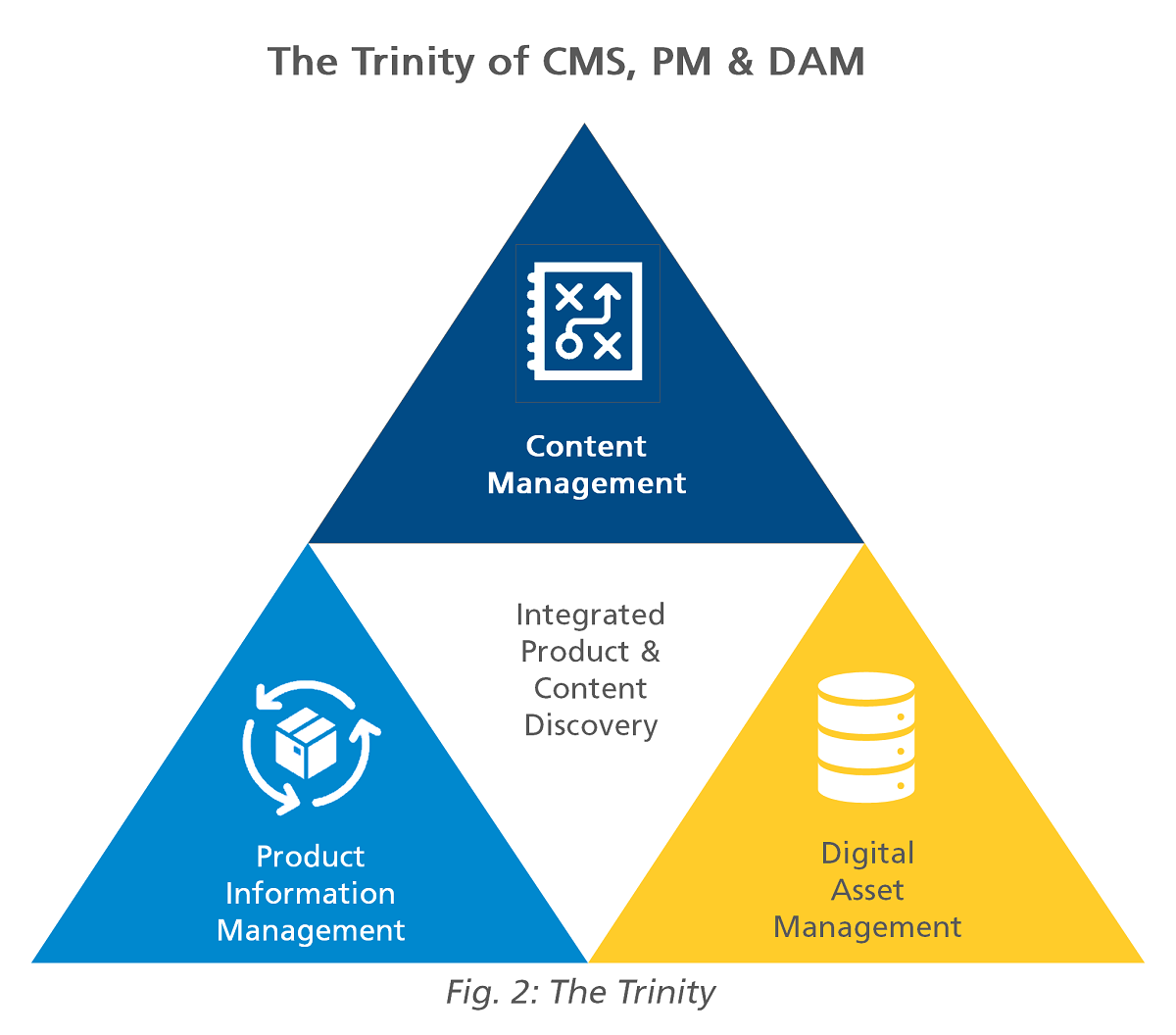Mastering Omnichannel Engagement through Integrated Product and Content Management
Introduction
The customer of modern times is unpredictable. With plenty of bargains available, customers are spoilt for choices and look around to find the best deal. Their values, preferences, and expectations are neither fixed, nor universal. Customers want authenticity, personalization, zero friction, and on-demand functionality in their shopping experiences. The rise of the intelligent and informed buyer has triggered the need for an omnichannel engagement.
Modern-day buyers look for a seamless shopping experience from their first touchpoint to the last, without bothering about the incoming channel. They expect the right content, on the right set of channels, at the right moment. This is because omnichannel emphasizes that each sales channel is equally important and deserves equal attention.
Although omnichannel is usually thought of as an experience governed by systems and processes, it is the customer who decides how a transaction occurs. The role of IT systems and business processes is just to facilitate the customer journey from start to finish.
We must assume by default that shoppers will hop across channels and devices. Therefore, organizations need to be consistent in promotions, messaging, and language across all channels and customer touchpoints.
Usually, enterprises readily redesign their various touchpoints to be modern and attractive, but little effort is spent revamping the systems and people connected to them. These multichannel philosophies typically focus on optimizing by touchpoint rather than by customer journey. This often leads to a disparate experience due to siloed efforts.
In an article from McKinsey, analysts write, “While companies can be tempted to focus on optimizing individual touchpoints, believing that the whole will automatically be greater than the sum of its parts, such targeted intervention can magnify variations in service and inconsistencies in other interactions. “
This is because it takes a lot more effort to overhaul systems supporting product and content, customer, inventory, order management and fulfillment in an enterprise. Digital-born organizations can achieve this easily, but it may be quite difficult for enterprises with huge amounts of legacy debt. Eventually, they will see the need to transform their operating model and technology ecosystem to be more customer centric.

Integrated Product and Content
One of the most fundamental reasons to closely integrate as much of the technology stack as possible is product and content.
Providing consistent product and content across channels can help improve the customer experience by making it easier for customers to find and access the information they need. According to a survey by Epsilon, 72% of consumers say they expect a consistent experience across all channels and devices.
Similarly, organizations should aim for a single source of truth for product information, so they don’t have to enter it separately for every channel. This in turn will help to increase sales and build customer loyalty. A survey by Accenture found that customers who have consistent experience across channels are more likely to make a purchase (49%) and to recommend the brand to others (44%).
A Content Management system (CMS) allows publishing content and structure web pages without technical expertise. A Product Information management system (PIM) manages the master data related to a product in a central location.
Using a standalone CMS will affect how multimedia assets are structured and organized for publishing and retrieval. Additionally, this runs the risk of duplication or multiple versions of the same file, since there is no re-usability of content.
Similarly, a standalone PIM gathers different product information (EAN, SKU, etc.) in a single source, but fails to link multimedia files to the product. This is where Digital Asset management (DAM) comes into play – by leveraging information across these two systems to categorize, catalogue, and make assets available for disbursement across all channels.

Content Management
When the digital world came along, legacy organizations tried to evolve by launching various ‘digital’ channels. Therefore, to deliver content and run operations on these channels, organizations had to acquire multiple systems for publishing content – one for website, one for mobile, and so on. With more than one system responsible, the process of creation and publication of content had to be distributed across two or more teams, which led to less inter and intra collaboration. Since the content was scattered across different systems, the teams had to create the same piece of content multiple times, resulting in duplication of effort and lesser productivity.
It is difficult to locate specific content, and difficult to repurpose old content. This means that automating parts of the content workflow process becomes almost impossible. In essence, this becomes a vicious circle, making the content strategy even more sub-optimal.
All this translates into one simple insight – content cannot be ‘tied to’ specific channels and customer types but maintained in a single source, so that it’s always readily available no matter the scenario. A Headless CMS segregates the effort of designing, creating and storing content from where it is being presented to the end user. The term headless here signifies that content is available as part of a flexible platform through integration points to any customer channel. In other words, headless CMSs are by default omnichannel in nature.
Product Information Management
In many organizations, product information is managed in systems and solutions that may be a decade old and lack connections to other systems. The users create new product information for each channel, which increases operational spending and affects the speed of operations.
Moving out of such a system and process is quite a task since structuring legacy product data logically is certainly not easy. However, to connect all channels and provide a seamless omnichannel experience, an organization will have to start with one source of truth – this means the product data is clean, users have access to relevant information and it’s easier to broadcast robust content across all channels. That’s where a PIM solution can help.
Inherently, the PIM platform is a single source of truth for all things related to product information. Product descriptions, prices, specifications, ingredients, and packaging copy – all will fall under the umbrella of PIM platform. One obvious use-case for PIM solution is to enrich product data from various sources (ERP, PDF files, Excel sheets), embed it with marketing-relevant content like pictures and descriptive texts, and send it to various sales channels.
This means that, by design, data consistency and correctness across multiple distribution channels is one of the key advantages of a PIM platform. As an enterprise starts selling on multiple channels, having consistent product information leading to a consistent customer experience across all channels is a key goal while building an omnichannel customer experience.
Digital Asset Management
Every organization, large or small, creates digital assets to use for its website, social media, advertising, print marketing, and sales. Generally, in enterprises, a central repository is used to organize all digital assets. However, minimal integration with other systems or platforms across the organization makes it difficult to find the required assets at the right time. These data access issues, along with poor tagging and metadata business practices, and an unreliable search are the hallmarks of an outdated or legacy system.
A DAM (Digital Asset Management) solution acts as a single source of truth to store, manage, and publish digital assets. By making content searchable, organized, secure, and easy to access, a DAM solution helps to distribute content effectively and accurately across multiple teams to get it to the right channels. If PIM is the home of an organization’s product information, then DAM is the home of its digital assets.
Typically, DAM is integrated with other systems to streamline asset workflows and semi-automate processes. Some digital-ready organizations may implement a ‘headless’ DAM that delivers digital assets directly to websites and mobile applications. Others may advance this solution to deliver not only traditional assets such as images and videos, but also incorporate and deliver text, data, and any other assets needed to deliver an omnichannel experience.
Additionally, a DAM provides tools to manage content via approved access for all the users of the system. It ensures that all users, irrespective of the channel or the device, can view the right content on the right digital channel. Lastly, it helps to create and deliver personalized content based on insights, to determine which content works best for an individual customer.
Enhancing the experience with this Trinity System for Business Users
Imagine a business user is responsible for managing and updating a company’s online store, which sells products like clothing, accessories, and home goods. As part of managing the content supply chain, several actions might occur in DAM, PIM, and CMS.
In the DAM, the creative team might upload and organize multimedia assets (product photos, videos, and marketing materials) that are used on the online store and assign metadata to facilitate discovery and reuse. They might also set permissions and workflows for managing access to and approval of the assets for use in the CMS and PIM.
Subsequently, an operations user might create and manage product information in PIM, such as adding new products, updating pricing and availability, and creating variants (sizes or colors) and link the appropriate assets from the DAM to the records. They might also set up rules and processes for data enrichment, validation, and governance to ensure accuracy and consistency.
Finally, using CMS, a marketing manager might create and publish content like product pages, blog posts, and marketing materials using the assets and product information from the DAM and PIM. They might also set up analytics and tracking to monitor the performance and effectiveness of the content.
By using a CMS, PIM, and DAM together, the business user can efficiently and effectively manage the content and product information. This may involve coordinating with marketing, sales, and IT, to ensure the content supply chain is aligned with the business objectives and ensure that customers have a consistent and up-to-date shopping experience.

Conclusion
Although the advantages of running these systems individually outnumber not running these systems at all, by integrating these systems and processes into a holistic content strategy, businesses can deliver a seamless and engaging omnichannel experience. This will allow businesses to efficiently create and publish content that meets the needs and expectations of their customers and help to drive conversions and loyalty.
In the post-pandemic world, consumer expectations for how service is delivered have drastically changed. Soon, the pandemic may fade into history but these consumer expectations for value, service and flexibility will remain forever.
To meet the needs of customers on their journeys, selling organizations need such integrated tools. These tools are necessary to meet the customer where they choose, which enables the organization to provide exactly what the customer wants and needs. At LTIMindtree, we have helped brands drive their omnichannel customer experience to increase reach, engagement and sales. We helped Europe’s leading specialist electrical and telecommunications retailer to drive unique, yet a unified experience across all customer touchpoints and interactions (online and offline). This resulted in significant uplift in sales with significant increase in online conversions and average order value. To understand more about our digital capabilities please refer to the link – https://www.ltimindtree.com/services/customer-success/
Latest Blogs
Core banking platforms like Temenos Transact, FIS® Systematics, Fiserv DNA, Thought Machine,…
We are at a turning point for healthcare. The complexity of healthcare systems, strict regulations,…
Clinical trials evaluate the efficacy and safety of a new drug before it comes into the market.…
Introduction In the upstream oil and gas industry, drilling each well is a high-cost, high-risk…




